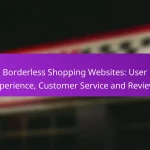Small businesses have a variety of shipping options available, including USPS, FedEx, UPS, and DHL, each tailored to meet different needs and budgets. By strategically negotiating rates, utilizing flat-rate options, and optimizing packaging, businesses can achieve cost efficiency while enhancing their shipping processes. Evaluating factors like delivery speed and tracking capabilities is essential for maximizing customer satisfaction and minimizing overall shipping expenses.

What shipping options are available for small businesses in the US?
Small businesses in the US have several shipping options that cater to different needs and budgets. The most common services include USPS Priority Mail, FedEx Ground, UPS Standard Shipping, DHL Express, and various regional carriers, each offering unique benefits and pricing structures.
USPS Priority Mail
USPS Priority Mail is a popular choice for small businesses due to its flat-rate pricing and reliable delivery times, typically within 1-3 business days. This service includes tracking and delivery updates, making it easy to manage shipments.
When using Priority Mail, consider the weight and size of your packages, as flat-rate boxes can provide significant savings for heavier items. Be aware of the dimensional weight pricing that may apply for larger packages.
FedEx Ground
FedEx Ground offers cost-effective shipping for businesses that need to send packages across the continental US. Delivery times generally range from 1-5 business days, depending on the distance from the origin to the destination.
FedEx Ground is ideal for heavier shipments, as it provides competitive rates for packages over 10 pounds. Small businesses should explore volume discounts and account management tools to optimize their shipping costs.
UPS Standard Shipping
UPS Standard Shipping is another reliable option for small businesses, providing delivery within 1-5 business days across the US. This service is known for its extensive tracking capabilities and customer service support.
Consider using UPS for larger shipments, as they offer discounts for bulk shipping and a range of packaging solutions. It’s beneficial to compare rates with other carriers to ensure you are getting the best deal for your needs.
DHL Express
DHL Express is an excellent choice for small businesses looking to ship internationally or to remote locations quickly. This service typically guarantees delivery within 1-3 business days, depending on the destination.
While DHL Express may be more expensive than domestic options, its speed and reliability make it worthwhile for urgent shipments. Businesses should evaluate their international shipping needs to determine if this service aligns with their goals.
Regional Carriers
Regional carriers can provide small businesses with tailored shipping solutions that often come at lower rates than national carriers. These companies specialize in specific areas, offering faster delivery times and personalized service.
When considering regional carriers, assess their coverage area and service offerings. They may provide unique advantages, such as local expertise and flexible pricing, which can be beneficial for businesses focused on specific geographic markets.

How can small businesses reduce shipping costs?
Small businesses can reduce shipping costs by leveraging various strategies such as negotiating rates with carriers, utilizing flat-rate shipping options, implementing shipping software, and optimizing packaging. Each approach can lead to significant savings and improved efficiency in the shipping process.
Negotiate rates with carriers
Negotiating shipping rates with carriers is a practical way for small businesses to lower costs. By establishing a relationship with carriers and discussing volume, frequency, and service levels, businesses can often secure better rates.
Consider reaching out to multiple carriers to compare offers. Many carriers are willing to provide discounts for businesses that ship regularly or in larger quantities, so it’s beneficial to shop around and leverage competitive pricing.
Utilize flat-rate shipping
Flat-rate shipping can simplify costs for small businesses by offering a single price for shipping regardless of weight or distance. This option is particularly useful for businesses that frequently ship items of similar size and weight.
For example, USPS offers flat-rate boxes that can be a cost-effective solution for shipping within the U.S. Businesses should evaluate their shipping patterns to determine if flat-rate options can save them money compared to traditional pricing models.
Implement shipping software
Shipping software can streamline the shipping process and help small businesses find the best rates. These tools often compare shipping options across different carriers, allowing businesses to select the most cost-effective choice for each shipment.
Many shipping software solutions also integrate with e-commerce platforms, automating label creation and tracking. Investing in such software can lead to time savings and reduced shipping costs over time.
Optimize packaging
Optimizing packaging is crucial for reducing shipping costs. Using appropriately sized boxes and materials can minimize dimensional weight charges, which many carriers impose based on package size rather than actual weight.
Consider using lightweight materials and custom-sized boxes to ensure products are well-protected without incurring unnecessary costs. Additionally, reducing packaging waste can enhance sustainability efforts while also saving money on shipping fees.

What factors should small businesses consider when choosing a shipping service?
Small businesses should evaluate delivery speed, shipping zones, insurance options, and tracking capabilities when selecting a shipping service. These factors significantly impact customer satisfaction and overall shipping costs.
Delivery speed
Delivery speed is crucial for customer satisfaction. Depending on your business model, you may need to offer same-day, next-day, or standard shipping options. Consider the trade-offs between faster delivery and higher shipping costs, as expedited services typically incur additional fees.
For example, local deliveries might be completed within a few hours, while national shipments could take one to five business days. Assess your target market’s expectations to determine the most suitable delivery speed for your offerings.
Shipping zones
Shipping zones refer to the geographical areas that shipping carriers serve, which affect delivery times and costs. Each carrier has different zone definitions, impacting how much you pay for shipping based on the distance from your location to the customer’s address.
Understanding these zones can help you choose a carrier that offers competitive rates for your most common shipping destinations. For instance, if you primarily ship within a specific region, look for carriers that provide favorable rates for those zones.
Insurance options
Insurance options protect your shipments against loss or damage during transit. Many carriers offer varying levels of insurance, which can be crucial for high-value items. Evaluate the cost of insurance against the value of your products to determine the right coverage.
For example, if you ship electronics or fragile items, consider purchasing additional insurance to mitigate potential losses. Always read the terms and conditions to understand what is covered and any limitations that may apply.
Tracking capabilities
Tracking capabilities allow both you and your customers to monitor the shipment’s progress. A robust tracking system can enhance customer experience by providing real-time updates and estimated delivery times. Look for carriers that offer detailed tracking information and notifications.
Some carriers provide tracking at no extra cost, while others may charge for premium tracking features. Ensure that the tracking options align with your customers’ expectations, as transparency can significantly improve satisfaction and reduce inquiries about order status.

How does shipping impact customer satisfaction?
Shipping significantly affects customer satisfaction by influencing their overall experience with a business. Timely deliveries, clear communication, and easy return processes can enhance customer loyalty and encourage repeat purchases.
Delivery timeframes
Delivery timeframes are crucial for meeting customer expectations. Customers typically expect their orders to arrive within a few days, with many preferring same-day or next-day delivery options. Businesses should clearly communicate estimated delivery times during the checkout process to manage expectations effectively.
Consider offering multiple shipping options, such as standard, expedited, and same-day delivery, to cater to different customer needs. This flexibility can improve satisfaction, especially during peak shopping seasons.
Shipping transparency
Shipping transparency involves providing customers with clear information about shipping costs, delivery times, and tracking options. Customers appreciate knowing the total cost upfront, including any potential fees, which can prevent unpleasant surprises at checkout.
Utilizing tracking systems allows customers to monitor their shipments in real-time, reducing anxiety and enhancing their overall experience. Businesses should ensure that tracking information is easily accessible and updated regularly.
Return policies
Clear and customer-friendly return policies are essential for maintaining satisfaction. Customers are more likely to make a purchase if they know they can easily return items if needed. A straightforward return process can significantly boost confidence in buying decisions.
Consider offering free returns or extended return windows to enhance customer satisfaction. Clearly outline the steps for returns on your website, and ensure that customer service is readily available to assist with any questions or concerns.

What are the best practices for managing shipping logistics?
Effective management of shipping logistics involves optimizing inventory, streamlining order fulfillment, and automating shipping processes. By focusing on these areas, small businesses can enhance efficiency and reduce costs.
Inventory management
Proper inventory management ensures that you have the right products available when customers place orders. Utilize inventory tracking software to monitor stock levels in real-time, which helps prevent overstocking or stockouts. Aim for a turnover rate that aligns with your sales patterns, typically between four to six times per year.
Consider implementing a just-in-time (JIT) inventory system to minimize holding costs. This approach requires close coordination with suppliers to ensure timely deliveries, which can be particularly beneficial for small businesses with limited storage space.
Order fulfillment strategies
Order fulfillment strategies should be tailored to your business model and customer expectations. Options include in-house fulfillment, third-party logistics (3PL), or dropshipping. Each method has its pros and cons; for instance, in-house fulfillment offers greater control, while 3PL can reduce overhead costs.
Evaluate your order volume and shipping destinations to determine the best strategy. For businesses with a high volume of orders, investing in a warehouse management system can streamline operations and improve accuracy in order processing.
Shipping label automation
Automating shipping label generation can save time and reduce errors in the shipping process. Use software that integrates with your e-commerce platform to automatically create labels based on order details. This not only speeds up the fulfillment process but also minimizes the risk of shipping mistakes.
When selecting a shipping label automation tool, consider features like batch printing and carrier rate comparisons. These functionalities can help you choose the most cost-effective shipping options and manage multiple carriers efficiently, ultimately enhancing your overall shipping logistics.


